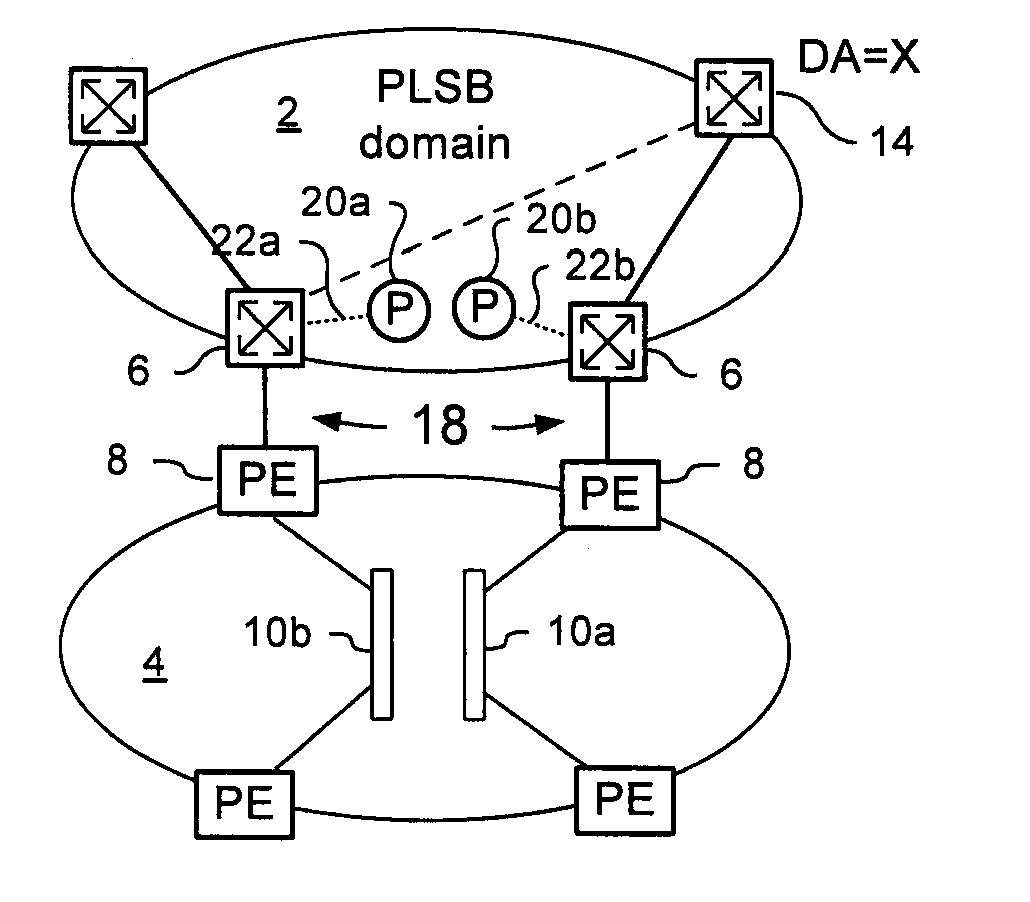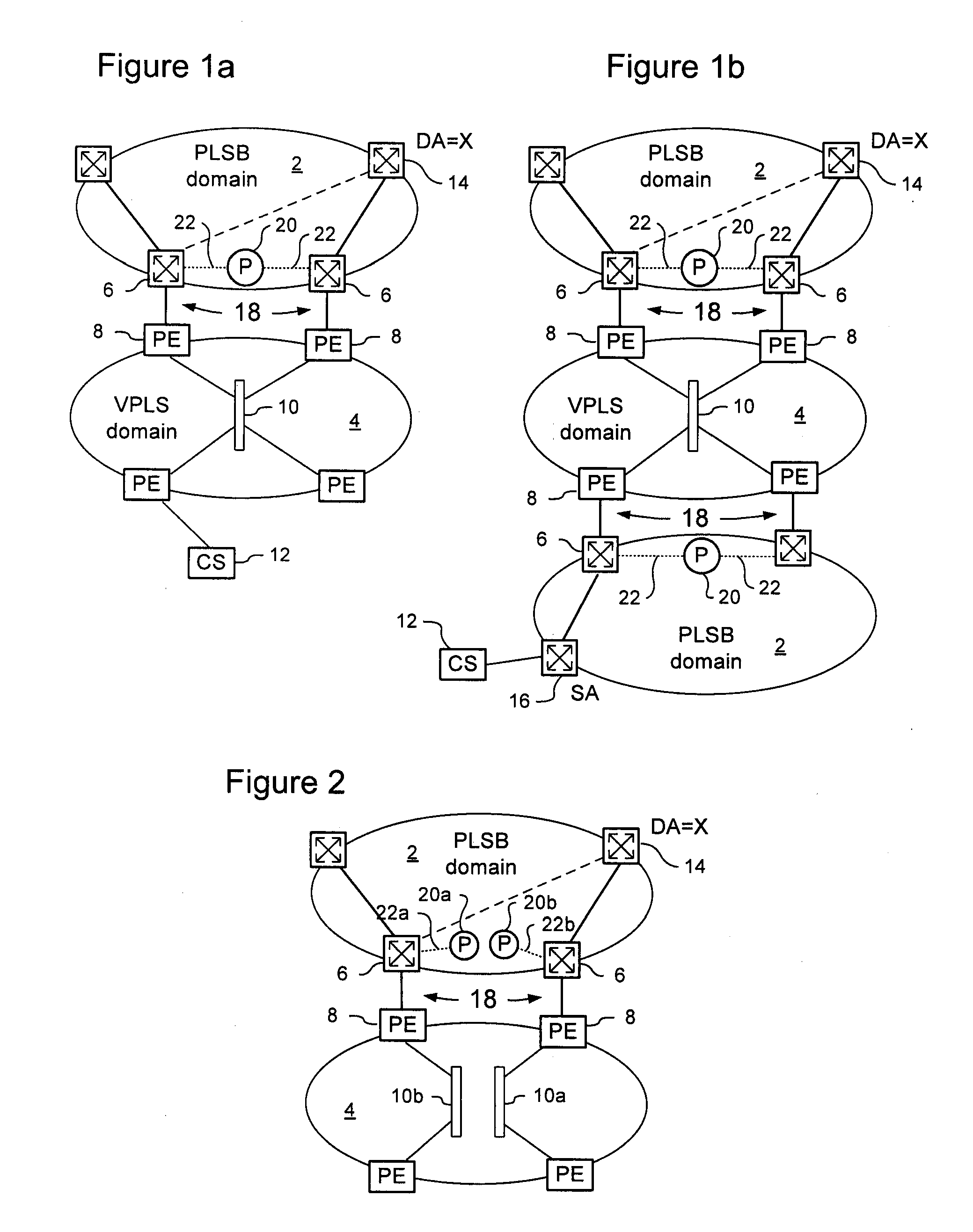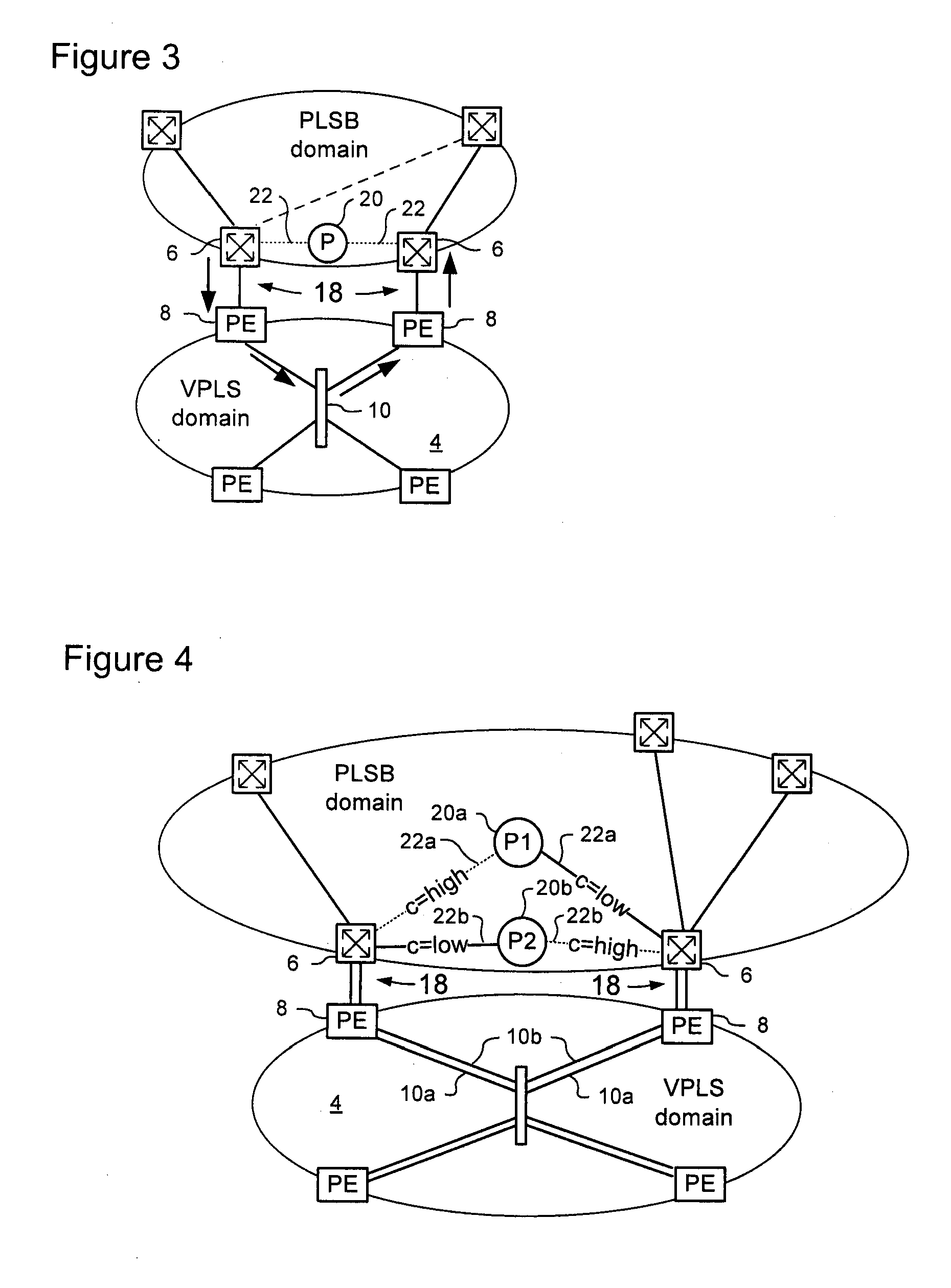Resilient provider link state bridging (PLSB) virtual private LAN service (VPLS) interworking
a provider link state and interworking technology, applied in the field of provider link state bridging and virtual private lan service (vpls) network domains, can solve problems such as poor scaling, inefficient flooding of frames, and already severe scaling limitations
- Summary
- Abstract
- Description
- Claims
- Application Information
AI Technical Summary
Benefits of technology
Problems solved by technology
Method used
Image
Examples
Embodiment Construction
[0025]The present invention provides a method for management of traffic forwarding in frame networks, and in particular to methods of interfacing Link State protocol controlled network domains and Virtual Private LAN Service (VPLS) network domains. Embodiments of the invention are described below, by way of example only, with reference to FIGS. 1-4.
[0026]PLSB as described in Applicant's co-pending U.S. patent application Ser. No. 11 / 537,775 provides a link state control plane for Ethernet networks using IS-IS to disseminate information that permits local computation and set up unicast paths and multicast trees in the network. The above patent document is hereby incorporated by reference. Like PBB, PLSB uses encapsulation to hide the C-MAC address spaces from the backbone operator network, facilitating scalability and security. PLSB is a “routed” infrastructure technology; and the IS-IS control plane makes nodes aware of the network topology, and the route to any specific B-MAC addre...
PUM
 Login to View More
Login to View More Abstract
Description
Claims
Application Information
 Login to View More
Login to View More - R&D
- Intellectual Property
- Life Sciences
- Materials
- Tech Scout
- Unparalleled Data Quality
- Higher Quality Content
- 60% Fewer Hallucinations
Browse by: Latest US Patents, China's latest patents, Technical Efficacy Thesaurus, Application Domain, Technology Topic, Popular Technical Reports.
© 2025 PatSnap. All rights reserved.Legal|Privacy policy|Modern Slavery Act Transparency Statement|Sitemap|About US| Contact US: help@patsnap.com



